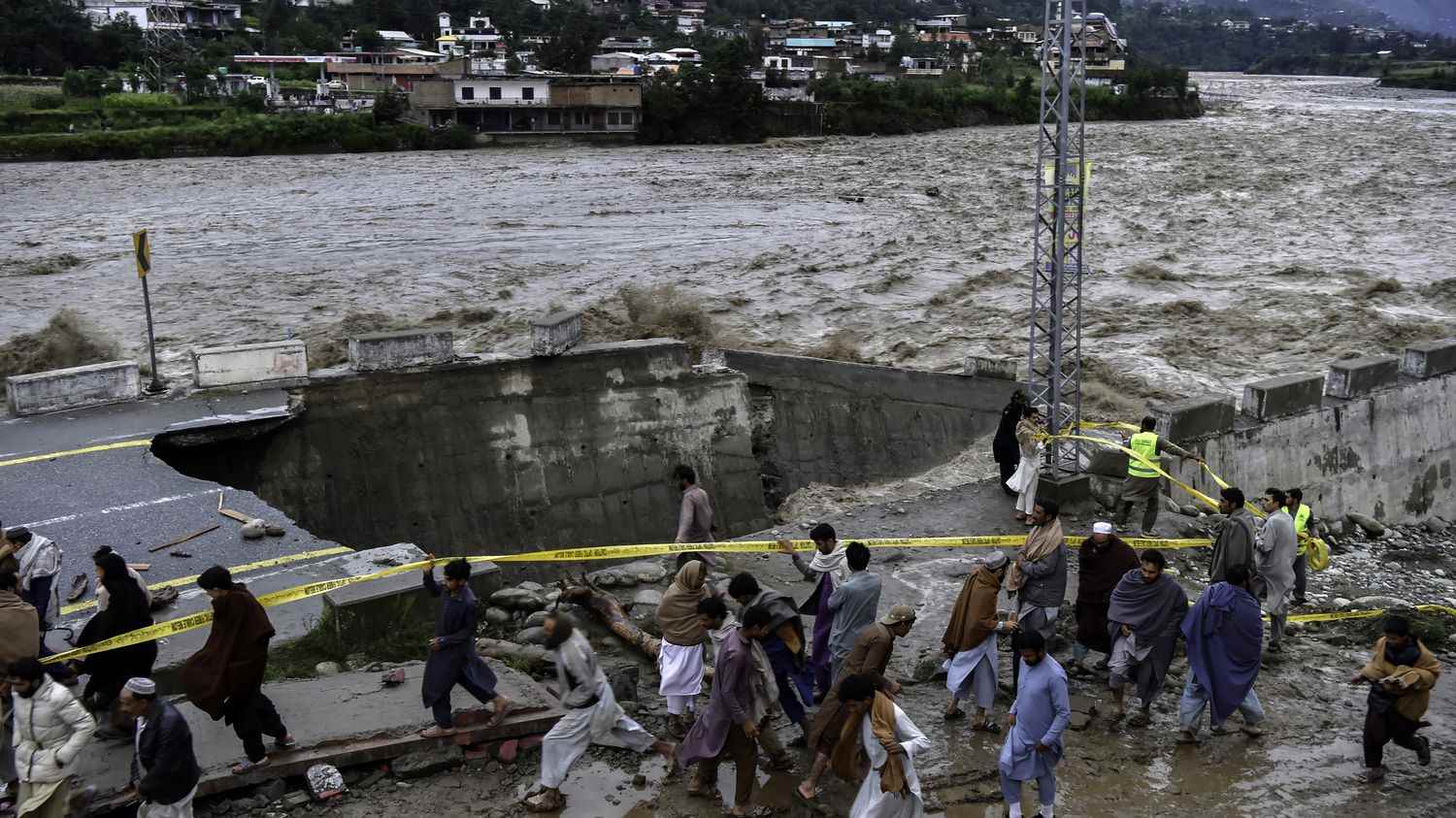Every year, between June and September, monsoon rains devastate the Indian subcontinent. But this year, the season is particularly deadly in Pakistan. The rains caused the death of 119 people in 24 hours, authorities announced on Sunday August 28. Their new toll shows a total of 1,033 deaths since June.
More than 33 million people, or one in seven Pakistanis, have also been affected by the floods, according to the National Disaster Management Authority. This lists more than 80,000 hectares of cultivable land ravaged, more than 3,400 kilometers of roads and 149 bridges washed away by the waters, and nearly a million houses destroyed or seriously damaged.
In a particularly vivid image, a 150-room hotel collapsed due to flooding in the northern province of Khyber Pahktunkhwa on Friday.
Further flooding is expected in the south of the country, where the gates of the dam that regulates the flow of the Indus River have been opened in an attempt to cope with its high flow.
Pakistani authorities compared the bad weather to that of 2010, when 2,000 people were killed and almost a fifth of the country was submerged by rains.
They attributed the intensity of these monsoon rains to climate change, saying that Pakistan is unfairly suffering the consequences of irresponsible environmental practices elsewhere in the world. Pakistan was in 8th position among the countries most affected by extreme weather phenomena between 2000 and 2019, according to a study by the NGO Germanwatch (in English).
On Friday, the government declared a state of emergency and mobilized the army to deal with this “disaster of a rare magnitude”, as Climate Change Minister Sherry Rehman has called it. Thousands of residents had been called to evacuate from flood-prone areas.
The disaster comes as Pakistan faces a collapsing economy, and has remained mired in political crisis since the April ousting of Prime Minister Imran Khan in April.
